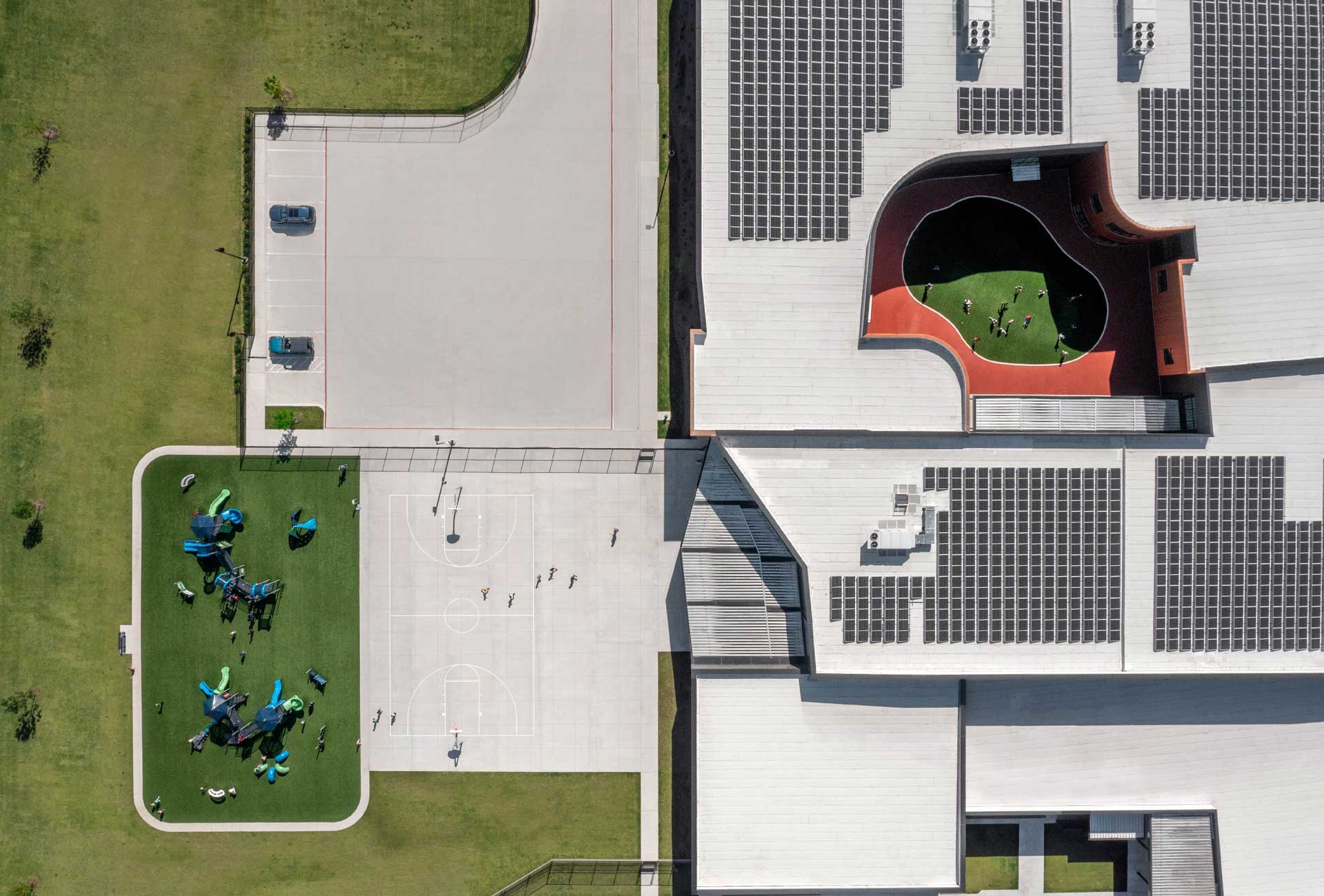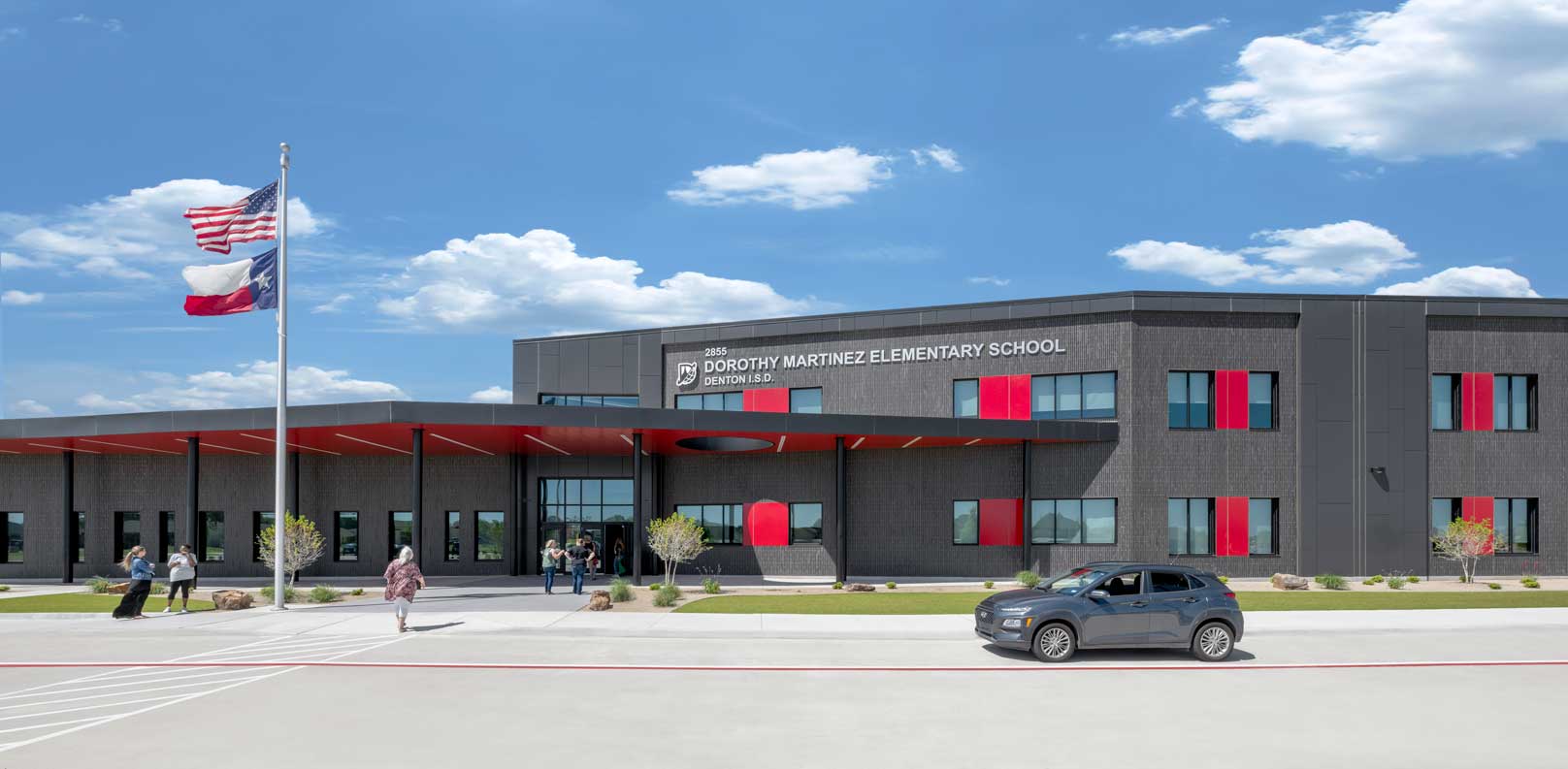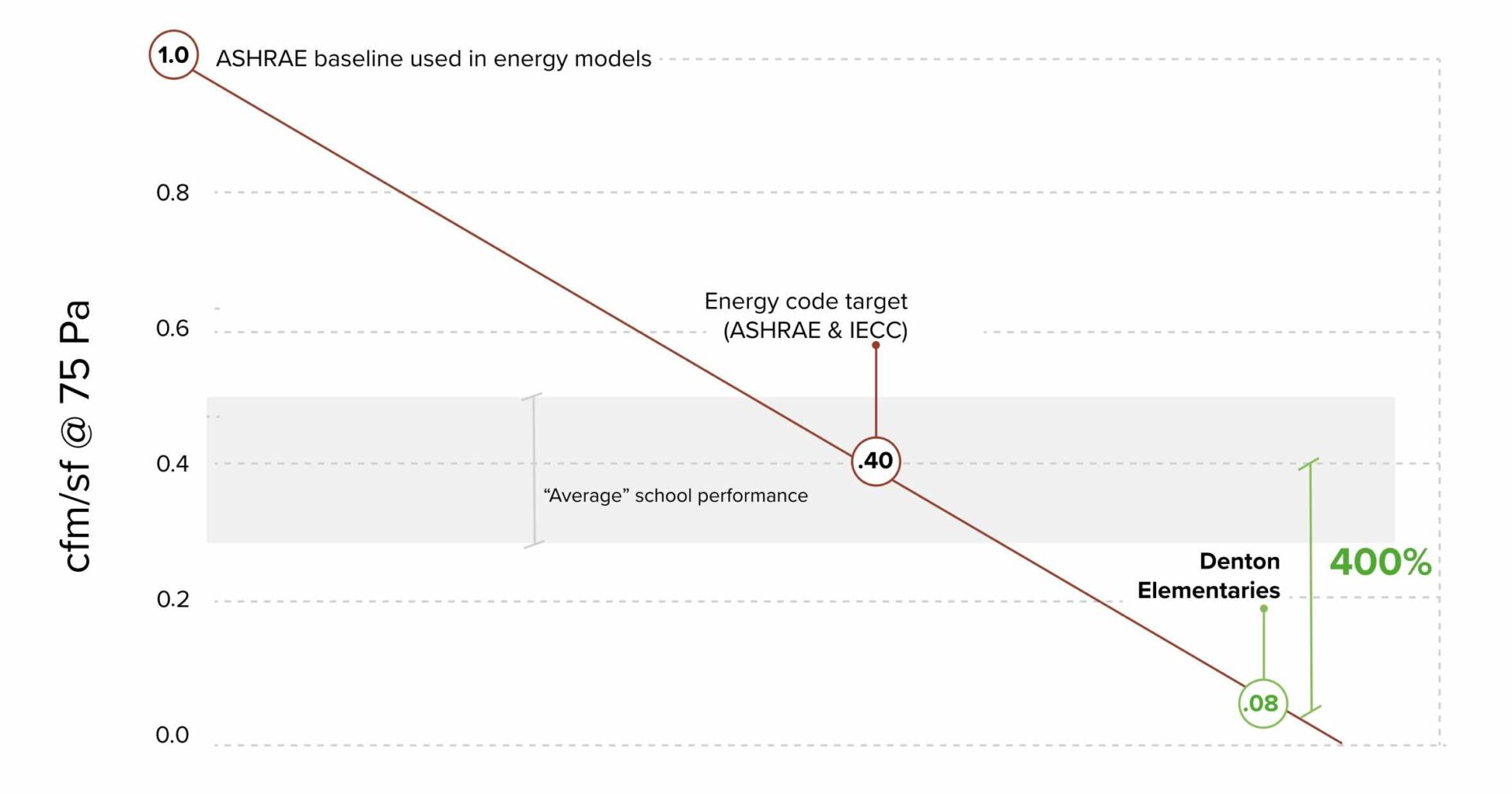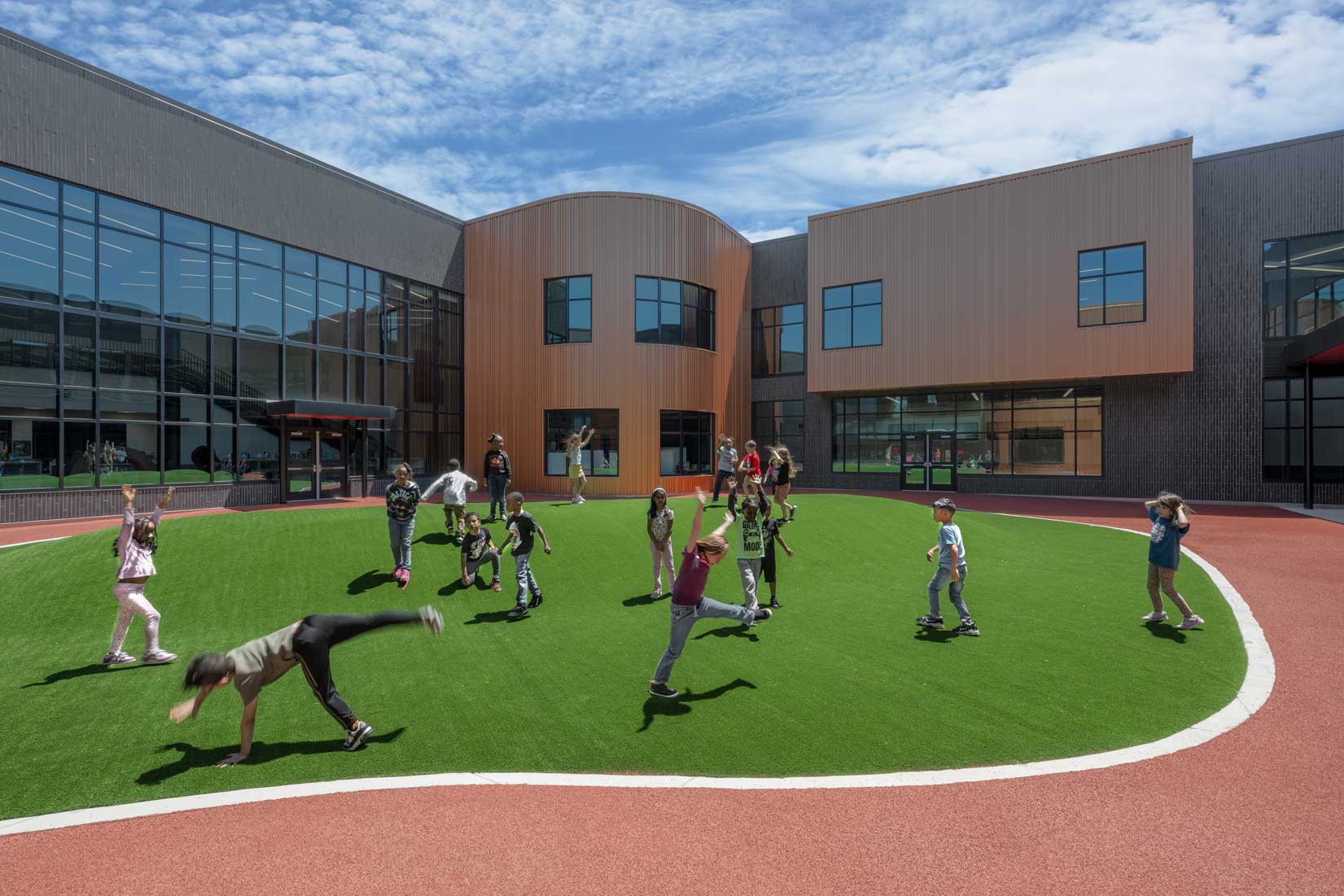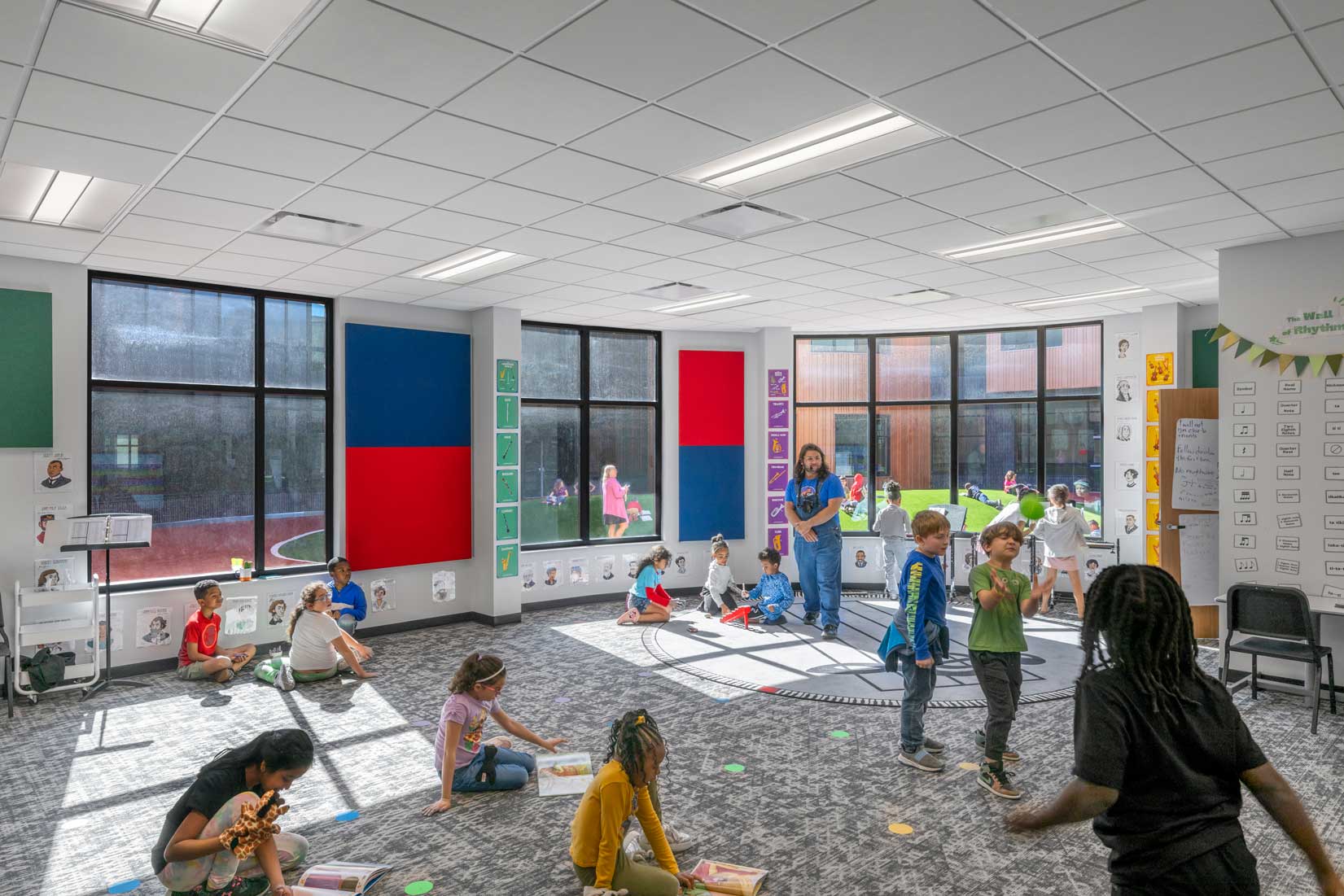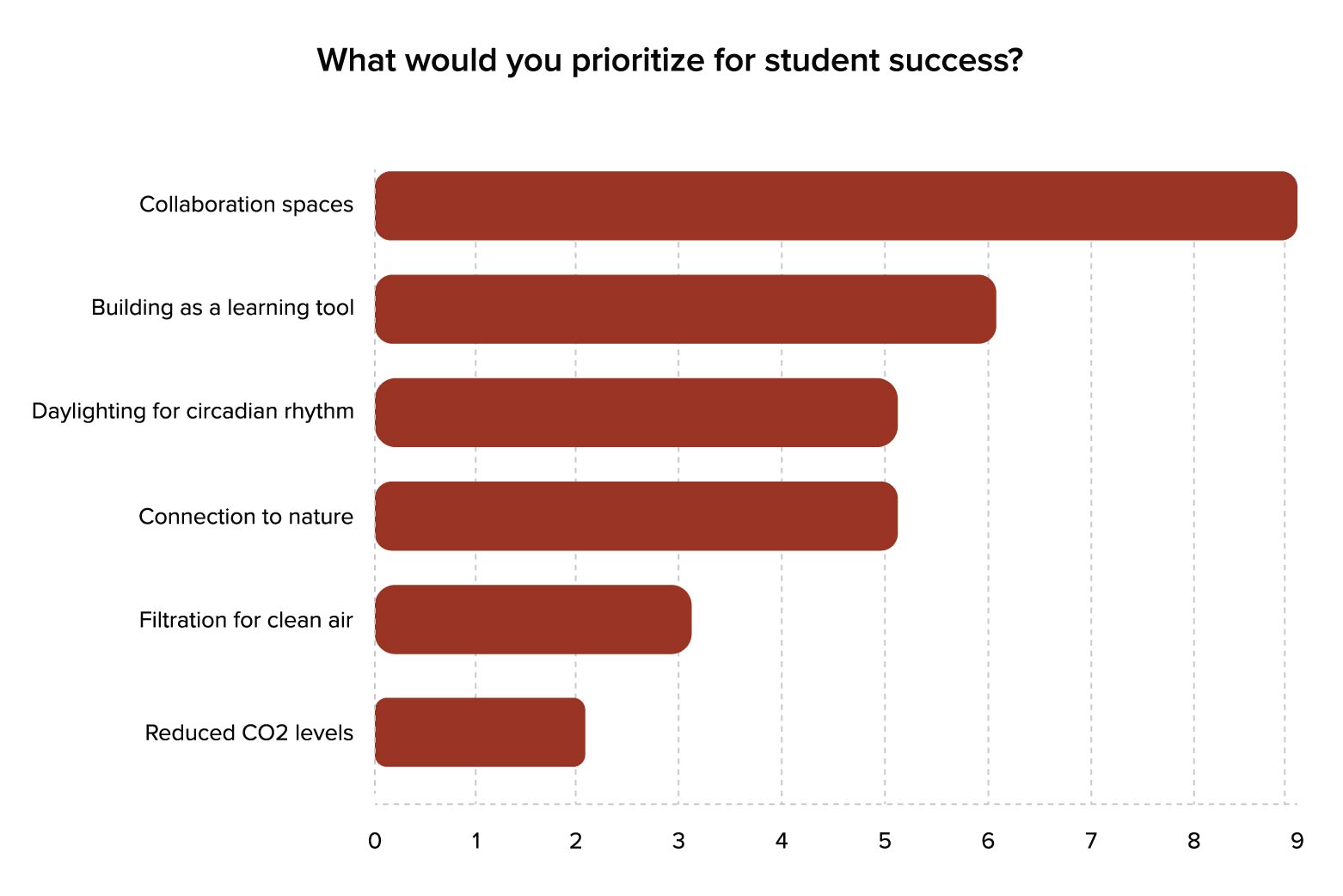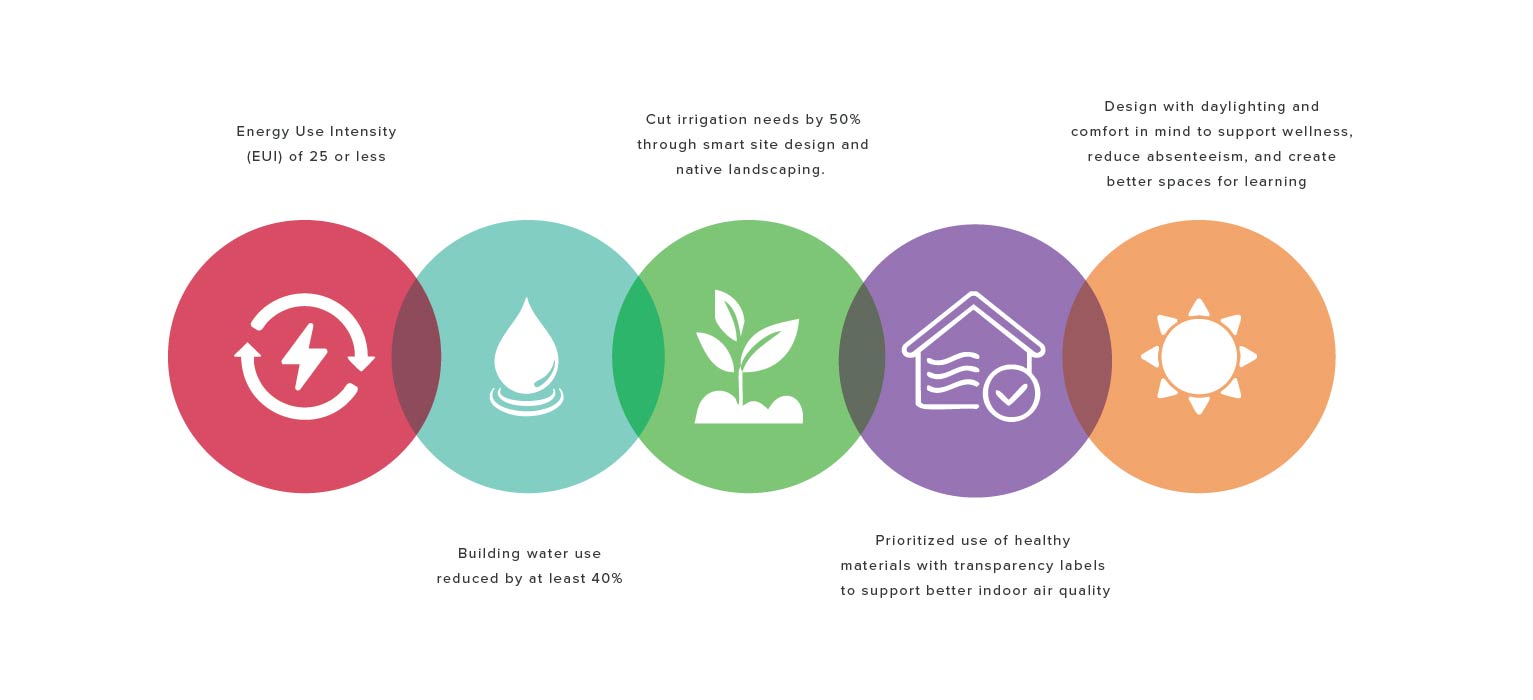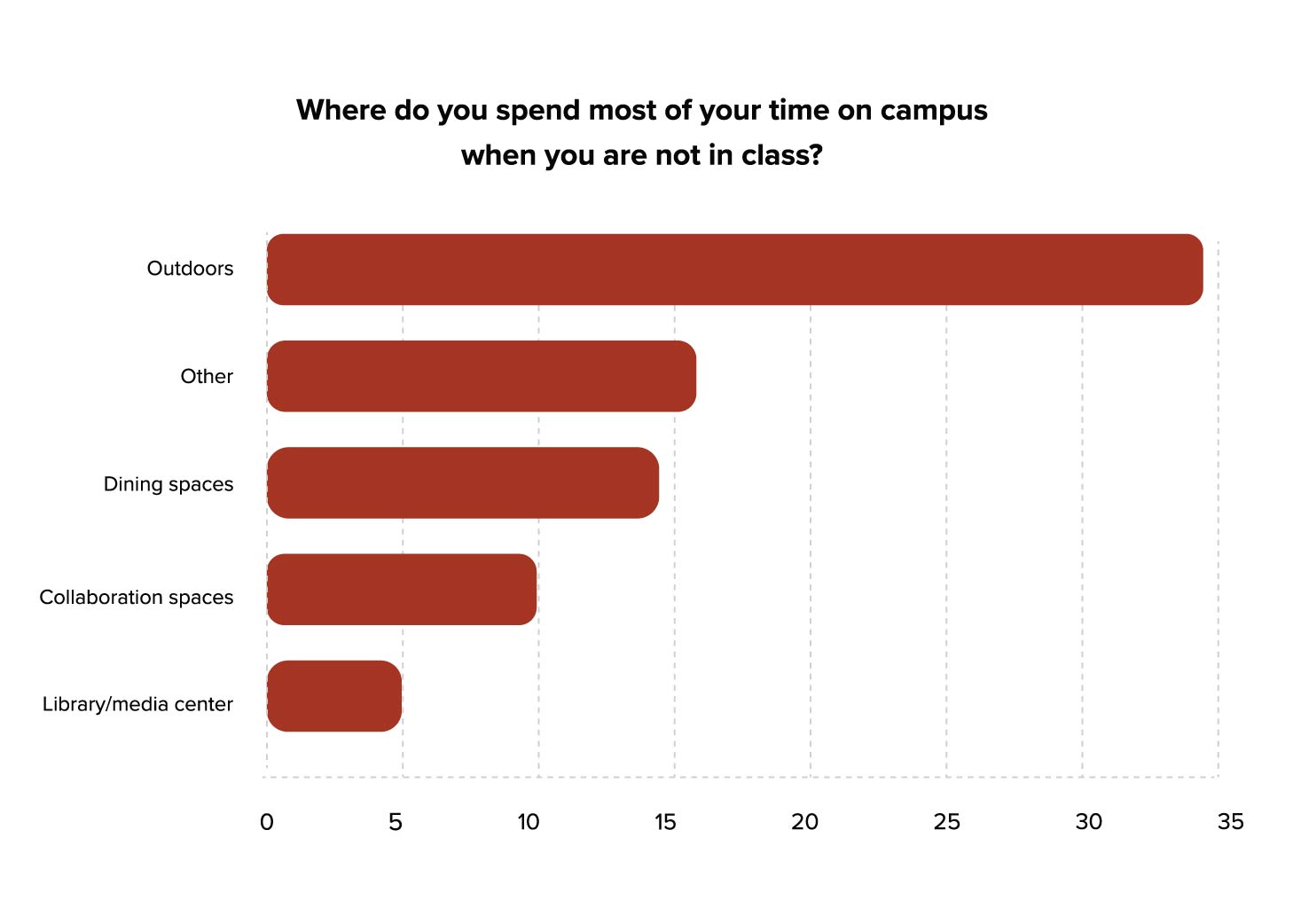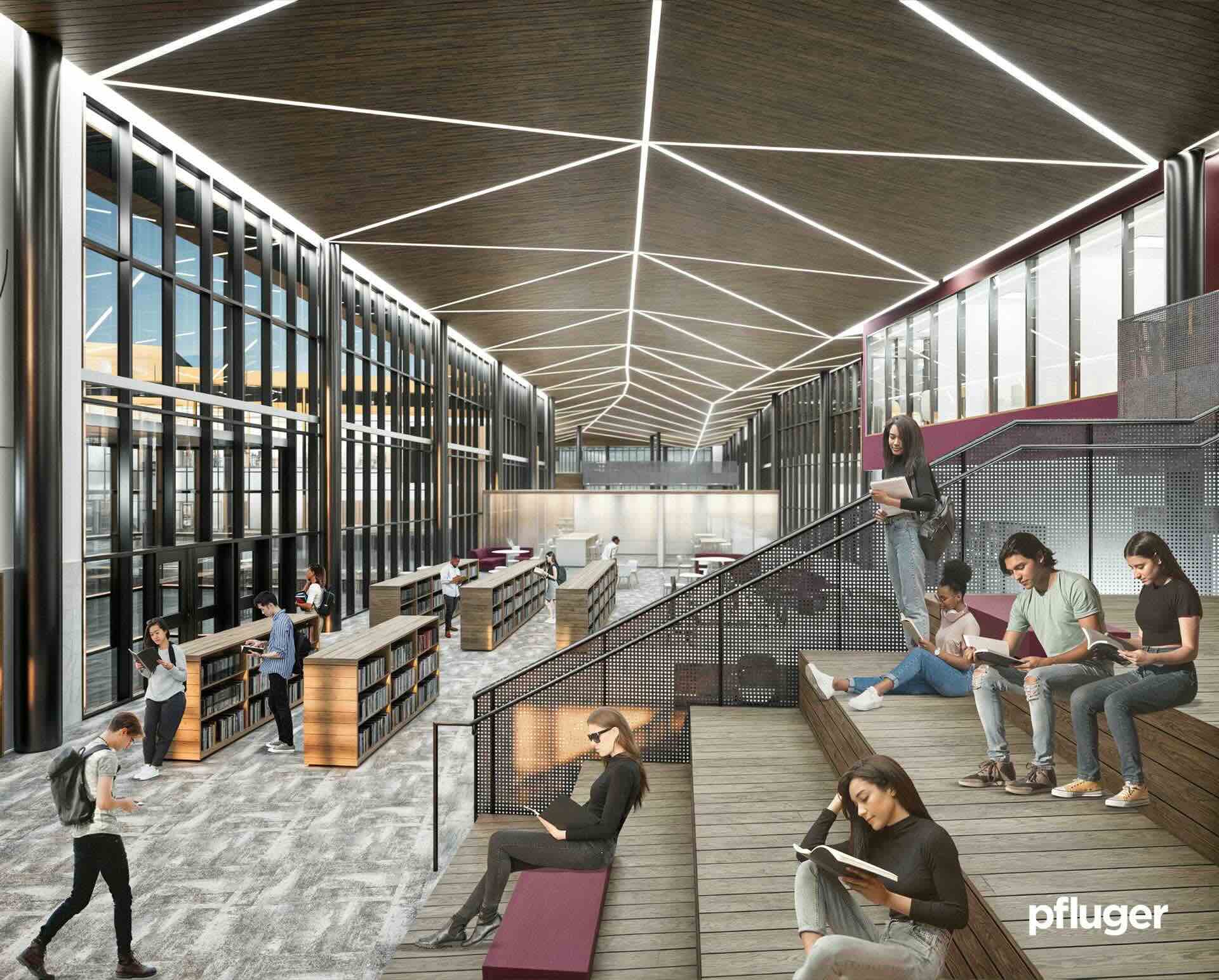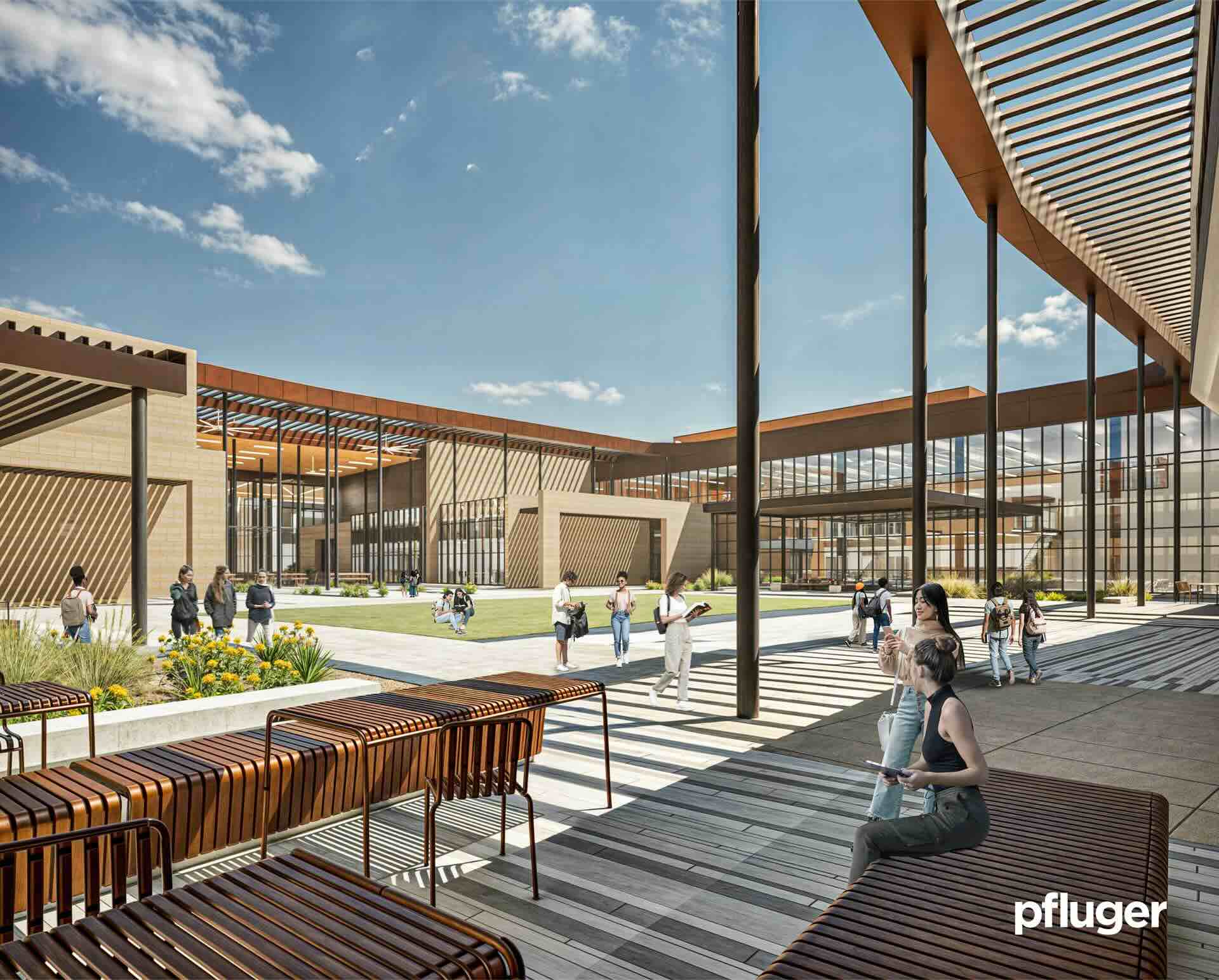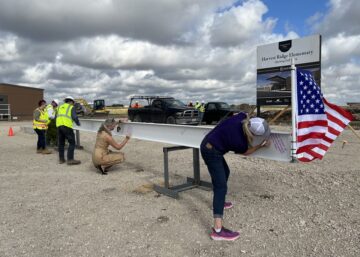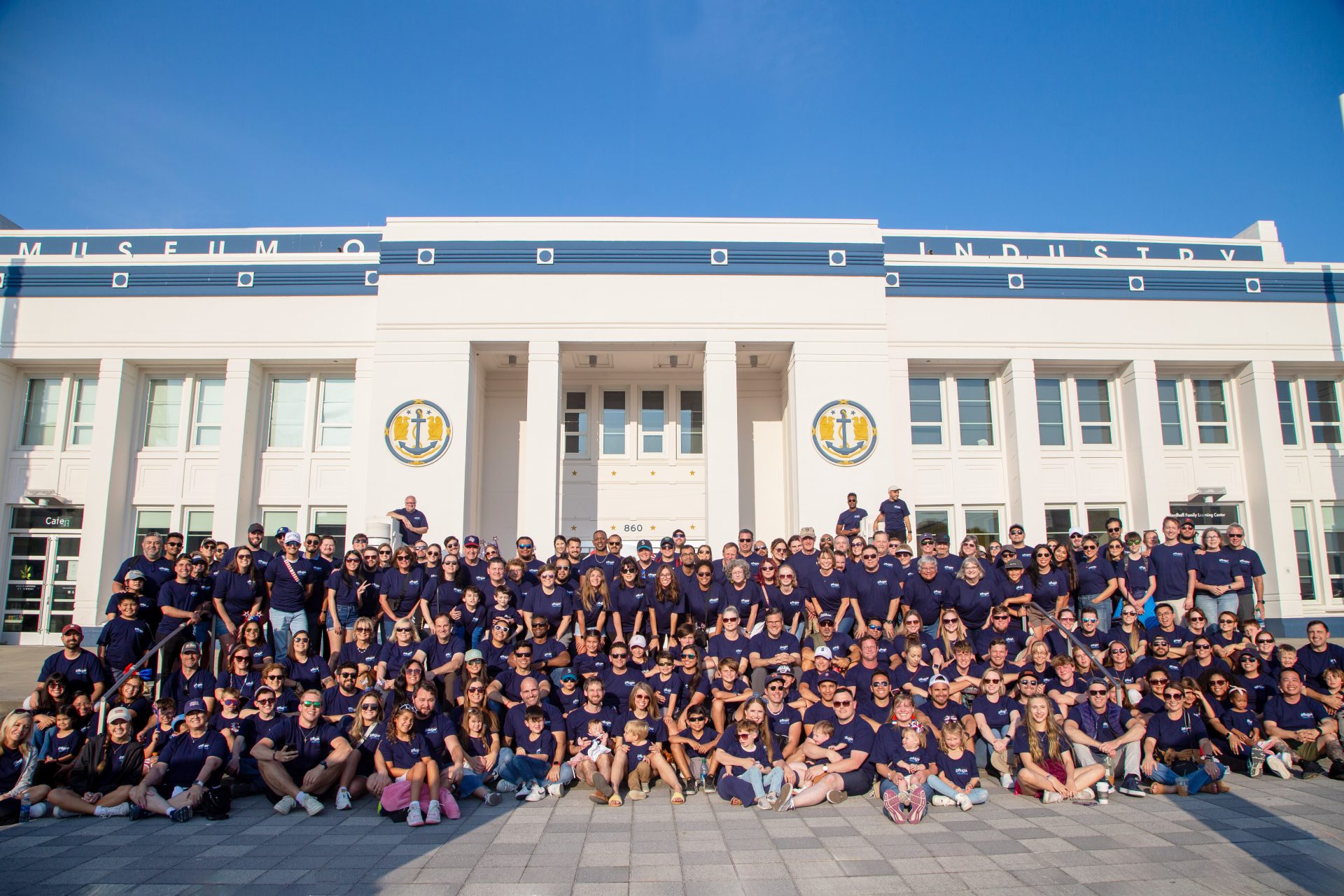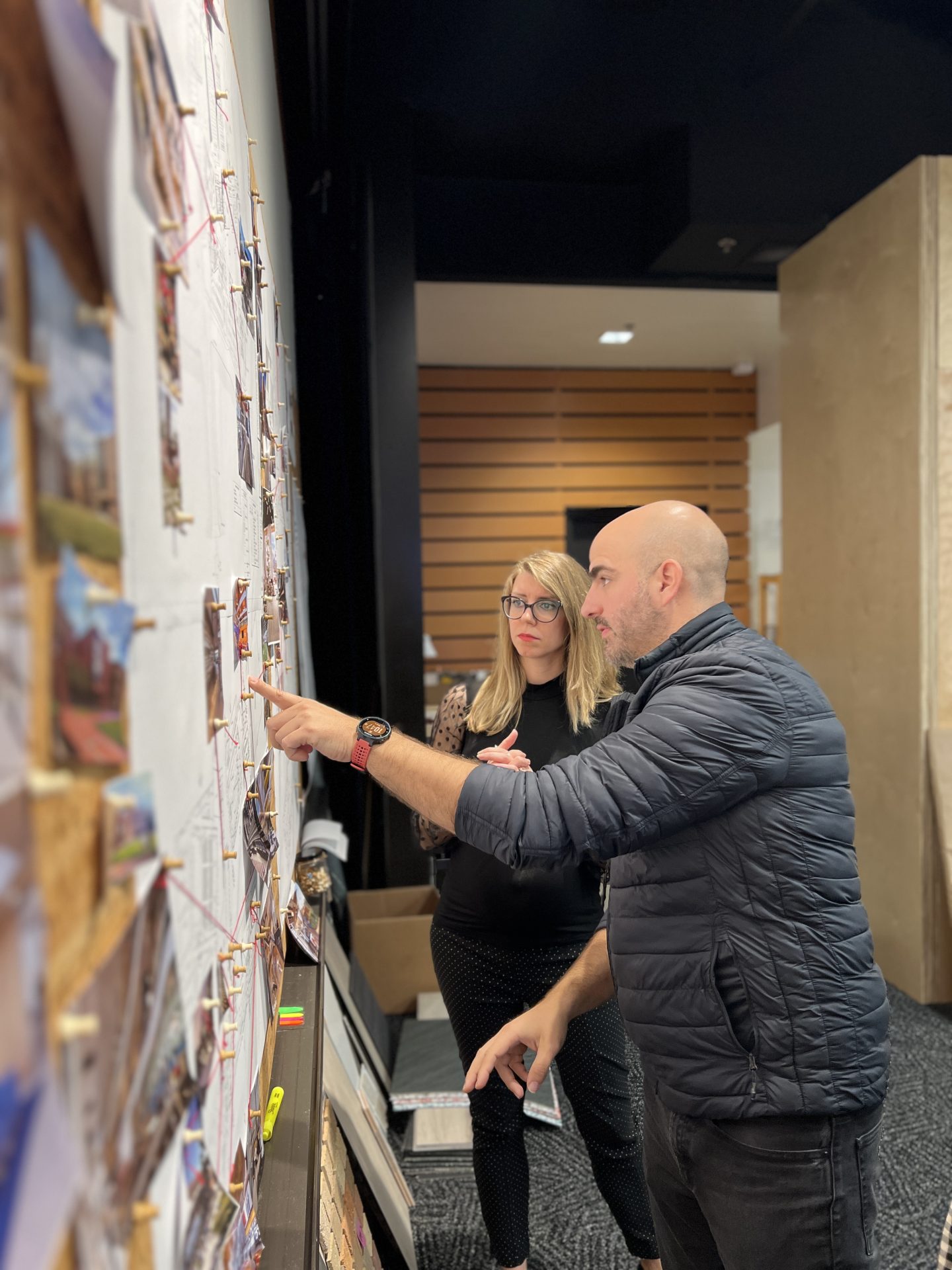Three new elementary schools in Denton were designed together to reduce energy use, improve air quality, and support student wellness. One is already in use, another is complete, and the third is wrapping up construction.
Meanwhile, a few hundred miles west, Midland ISD is in the early stages of designing two massive high schools. Though these schools differ in scale and context, both districts’ projects share a common thread—the same collaborative team and a shared focus on sustainability and performance from day one.
These two districts are at different points in the process, but together, they tell a full-circle story about making smart decisions early, designing for long-term performance, and creating environments that support student wellness. What’s working in Denton is informing what’s next in Midland.
Pfluger and CMTA are the team behind both efforts. Pfluger designs schools through a collaborative process that aligns educational goals with practical, efficient solutions. CMTA is nationally recognized for high-performance system designs that reduce energy use, improve air quality, and lower long-term costs. Together, we’re helping districts weigh tradeoffs, set priorities, and make decisions that shape how the schools will function long term.
A District Ready to Push Further
Denton ISD wasn’t new to building energy-efficient schools, but this time, they wanted to raise the bar. Their goal was to reach an Energy Use Intensity of 20 or less—a significant leap, as their most efficient campuses at the time averaged between 23 and 24. EUI shows how much energy a building uses in a year, based on its size. Reaching this new target meant aligning design, systems, and construction more closely than ever before—and it started with a new elementary prototype developed by Pfluger.
All three new campuses were based on that shared prototype design, created to be compact, flexible, and ready to evolve with the community. The results are already promising. Martinez Elementary, the first school to open, is tracking at an impressive 18 EUI—well ahead of the district’s goal. Over the next year, performance data will offer more insights to refine and enhance future projects.
Details That Deliver
The most efficient buildings start with a tight envelope. Air leakage is one of the biggest barriers to performance, so every joint, seam, and connection has to be deliberate. That mindset shaped the design of all three campuses—each planned as a compact, two-story building to reduce the surface area exposed to the elements. Less wall, less roof, and fewer seams meant less opportunity for heat to move in or out.
Two of the campuses—Martinez and Hill—took that strategy even further with a different approach to construction. They used prefabricated wall panels, built off-site by Baker Prefab, that were delivered ready to install. Working in a controlled environment helped maintain quality and precision, reducing variability and supporting the level of airtightness that’s difficult to achieve with traditional framing. Once completed, the buildings underwent pressure testing, where Martinez and Hill recorded the tightest envelope results CMTA had ever seen:
1. Hill Elementary tested at 0.080 cfm/sf
2. Martinez Elementary reached 0.074 cfm/sf
Both results exceeded federal standards by over 200% and outperformed IECC code by more than 400%.
Inside, the building systems were designed to match the efficiency of the envelope—starting with a decoupled outside air system designed by CMTA. Rather than relying on a single system to provide both (ventilation and thermal comfort), a decoupled system delivers outside air separately from the main system that handles heating and cooling. This allows each component to be optimized for its specific role, improving humidity control, reducing waste, and creating a more stable indoor environment—especially in Texas’ unpredictable weather. To help maintain a healthy and efficient environment, indoor air quality sensors were installed throughout the campus to track real-time data on CO₂, VOCs, and other vital metrics.
Wellness and Education
The investments at Denton are not merely operational but educational. The district will soon introduce the Sphere Dashboard, created by CMTA, to bring building performance into the classroom. Developed by CMTA’s building science team, Sphere displays real-time data from energy systems and indoor air quality sensors. Students, educators, and facility teams can explore how their school responds to weather, occupancy, and behavior—turning the building into a living lab for STEM learning and sustainability awareness. It adds a new dimension to the district’s investment, inviting students to engage with their environment and see how design shapes their everyday experience.
Explore the dashboard: https://www.cmta.com/bsl/sphere
Outdoor learning environments were designed with the same intentionality. Each campus includes a secure, enclosed courtyard that supports instruction and gives teachers flexible space to take learning outside. For students, these spaces create a more sensory and engaging experience. Whether they’re exploring nature for a science unit, working on a sustainability project, or simply spending time in the fresh air, the environment becomes part of how they learn.
A Return on Vision
Because Denton ISD focused on performance from the very beginning, the district now qualifies for Clean Energy Tax Credits through Elective Pay.
The two schools are expected to earn a combined $4.2 million in tax credits that will help support future capital investments.
1. $2.2 million for Martinez
2. $1.9 million for Hill
Midland ISD: Planning for Scale, Starting with Purpose
While Denton’s new schools were opening their doors, Midland was entering a new chapter of its own. With a $1.4 billion bond already approved, the district was beginning the design process for two new high school campuses—Midland High School and Legacy High School—totaling more than 1.5 million square feet, meaning each campus is roughly the size of a regional shopping mall.
The team knew this scale called for a more intentional kind of planning. Typically, the decisions made in the first 30% of the design process hold the greatest impact. CMTA calls it the First 30. Once those choices are set, they’re hard to undo. Bringing everyone to the table early in the process gives the team space to think ahead, test ideas, and align on goals before anything gets locked in.
That’s why Pfluger brought CMTA into the process before schematic design began—to make sure performance goals were embedded from the start. One of the first steps was a Health, Wellness, and High-Performance charrette with district leaders, facilities staff, and other key stakeholders. Before diving into strategies and solutions, participants were asked:
And, by the end of the charrette, the group had ranked nine priorities.
- Circadian Rhythm
- Indoor Air Quality
- Hydration
- Nutrition
- Thermal Comfort
- Hygiene
- Acoustics
- Movement
- Nature/Biophilia
From these priorities, the team created five measurable targets that shaped every aspect of design and engineering:
Efficiency matters deeply to Midland ISD. The district operates under one of the state’s highest recapture rates, which magnifies the impact of every operational saving. Each dollar Midland saves on energy and maintenance saves $1.47 to local taxpayers—transforming sustainable design choices into significant financial benefits for the community.
Translating Vision Into Design
Pfluger designed the buildings to maximize natural light without overheating the spaces, ensuring both comfort and efficiency. More than 90% of educational areas have direct daylight from either northern or southern exposures—a difficult feat for projects of this scale. This strategic orientation captures abundant daylight while avoiding direct exposure to the harsh West Texas sun.
The design team extended these sustainability principles beyond the buildings themselves. For example, Midland High is being built on a former golf course, where the layout had to work around more than 300 mature trees, a steep 34-foot grade change, and a wide utility easement running through the middle of the site. The design prioritized preserving as many trees as possible while still making space for sports fields, parking, and circulation. Some trees were relocated to an on-site nursery for care until they can be replanted after construction. Legacy sits on a site with no trees, so new trees will be planted to match the quantity of the golf course site to transform the bare field into a welcoming, shaded landscape. Both campuses incorporate native plants and low-maintenance landscape design to conserve water and reduce ongoing maintenance costs.
For Midland ISD, these campuses also represent a paradigm shift in how learning environments are organized. Flexible collaboration spaces—open areas where students can work in small groups or teams—emerged as a top priority during the charrette and became a defining feature of the design. This approach reflects a growing recognition that education doesn’t always happen in rows of desks. Rather, these adaptable spaces give students and teachers more freedom to engage, share ideas, and build community in ways that traditional classrooms don’t always allow.
To ensure designs aligned with student needs, Pfluger also surveyed high schoolers across the district to better understand how they spend time on campus. Most shared that they prefer to be outdoors when not in class. This feedback helped guide the design toward a more connected experience—one where indoor and outdoor spaces flow together and students have more freedom in how they move, gather, and learn.
The academic core wraps around two courtyards —protected outdoor spaces that support both learning and downtime. Along that core, collaboration areas are strategically placed every 100 feet with direct views into the courtyards. These breaks not only invite natural light into the building but also create a sense of openness and comfort, even at this scale. Shared spaces like the dining commons and media center are easily accessible from all areas of the campus, supporting a sense of connection throughout the school.
The design approach in Denton laid the foundation for what became possible in Midland. By setting measurable goals early and aligning the design with long-term performance objectives, these two districts exemplify how thoughtful planning, shared expertise, and trust in the process can make a real and lasting impact.
